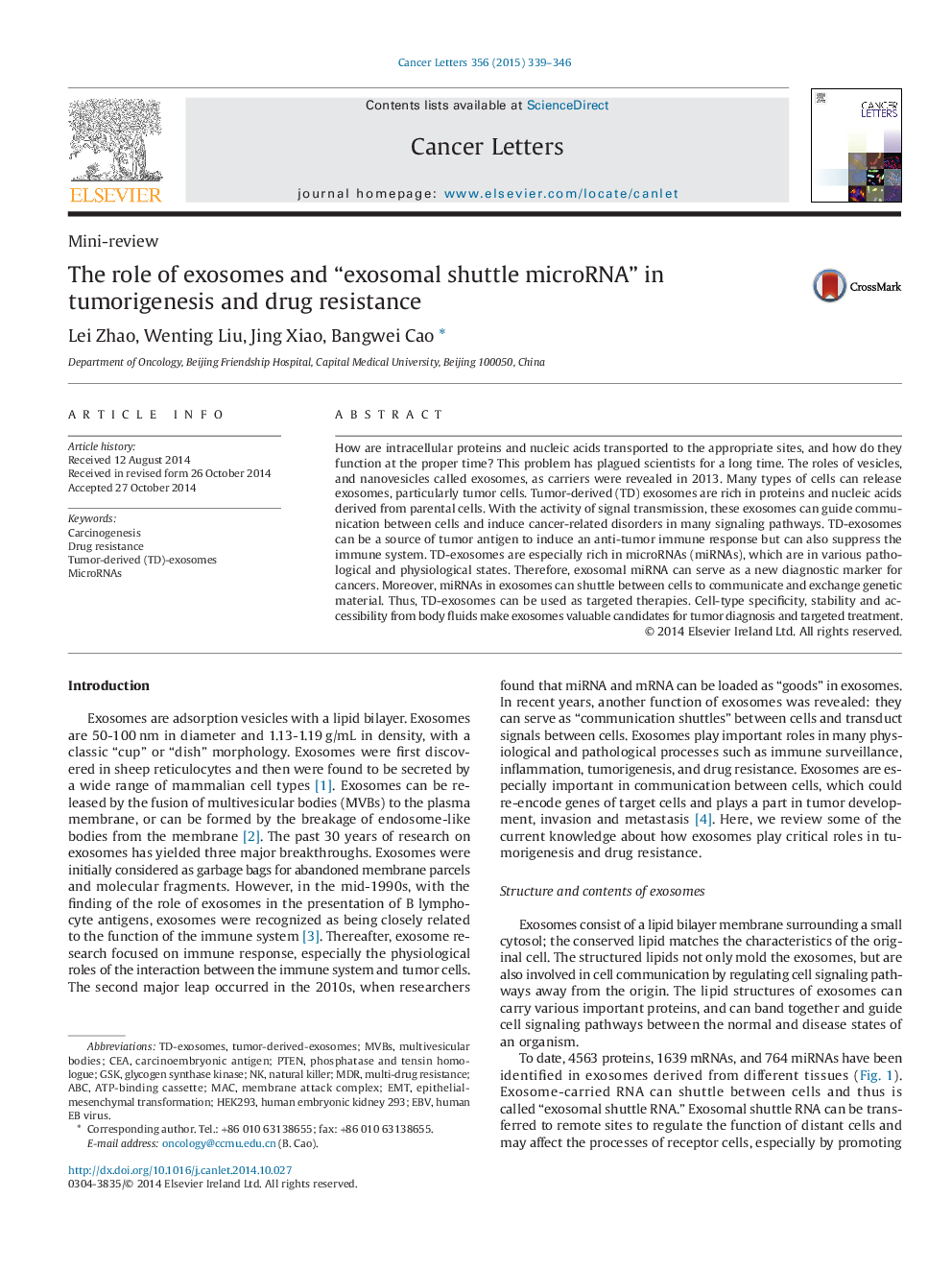| Article ID | Journal | Published Year | Pages | File Type |
|---|---|---|---|---|
| 10899666 | Cancer Letters | 2015 | 8 Pages |
Abstract
How are intracellular proteins and nucleic acids transported to the appropriate sites, and how do they function at the proper time? This problem has plagued scientists for a long time. The roles of vesicles, and nanovesicles called exosomes, as carriers were revealed in 2013. Many types of cells can release exosomes, particularly tumor cells. Tumor-derived (TD) exosomes are rich in proteins and nucleic acids derived from parental cells. With the activity of signal transmission, these exosomes can guide communication between cells and induce cancer-related disorders in many signaling pathways. TD-exosomes can be a source of tumor antigen to induce an anti-tumor immune response but can also suppress the immune system. TD-exosomes are especially rich in microRNAs (miRNAs), which are in various pathological and physiological states. Therefore, exosomal miRNA can serve as a new diagnostic marker for cancers. Moreover, miRNAs in exosomes can shuttle between cells to communicate and exchange genetic material. Thus, TD-exosomes can be used as targeted therapies. Cell-type specificity, stability and accessibility from body fluids make exosomes valuable candidates for tumor diagnosis and targeted treatment.
Keywords
GSKMDRABCMVBSHEK293natural killerCeAcarcinoembryonic antigenEBVmultivesicular bodiesEpithelial-mesenchymal transformationEMTmicroRNAsCarcinogenesisDrug resistanceMulti-drug resistanceMACPhosphatase and tensin homologuemembrane attack complexPtenhuman embryonic kidney 293ATP-binding cassetteglycogen synthase kinase
Related Topics
Life Sciences
Biochemistry, Genetics and Molecular Biology
Cancer Research
Authors
Lei Zhao, Wenting Liu, Jing Xiao, Bangwei Cao,
